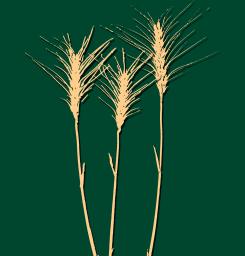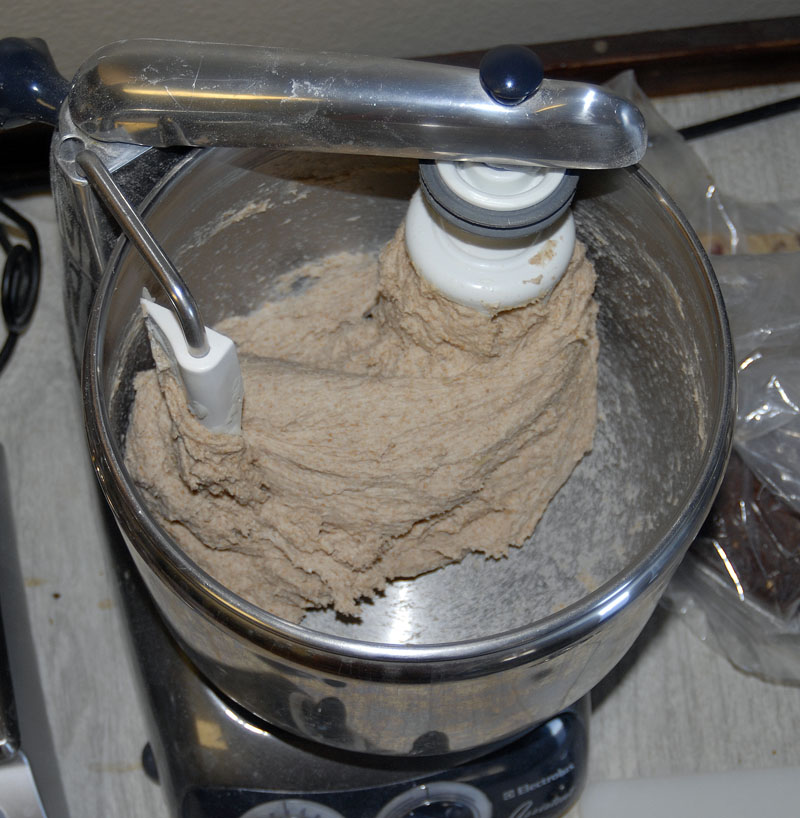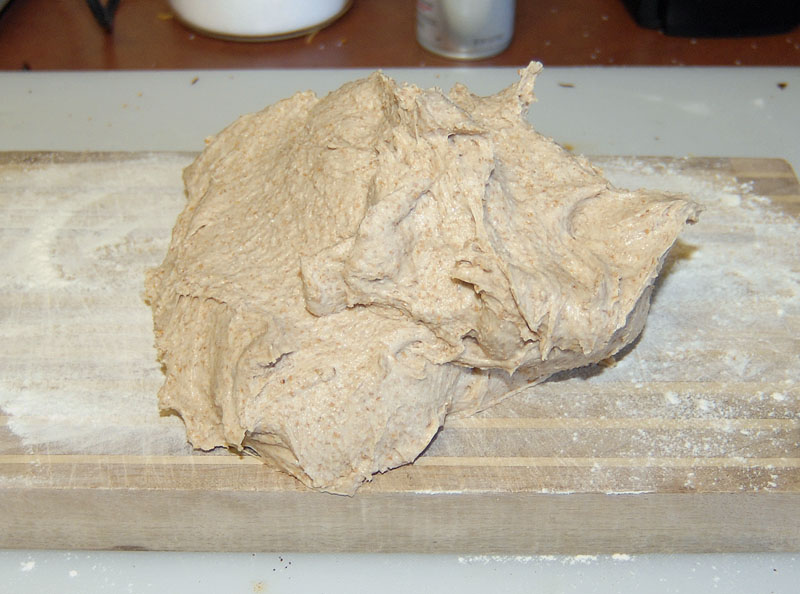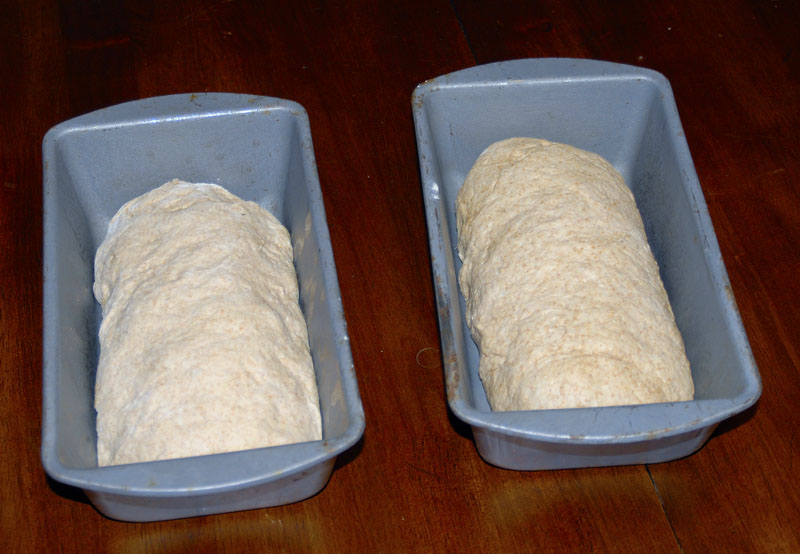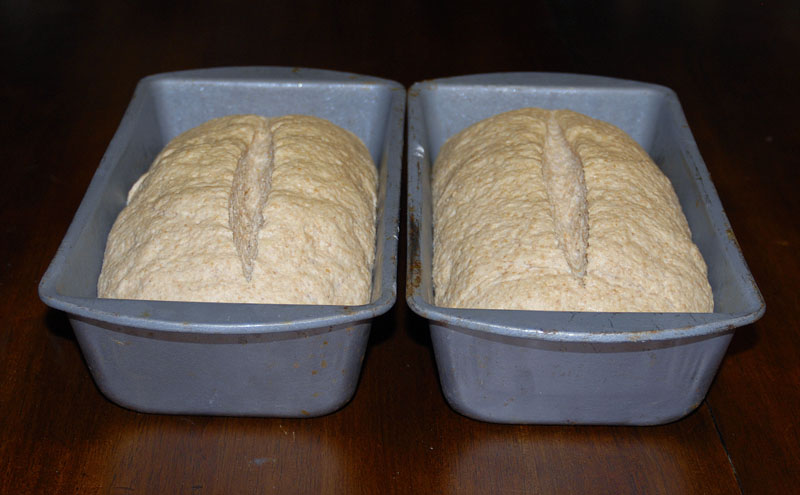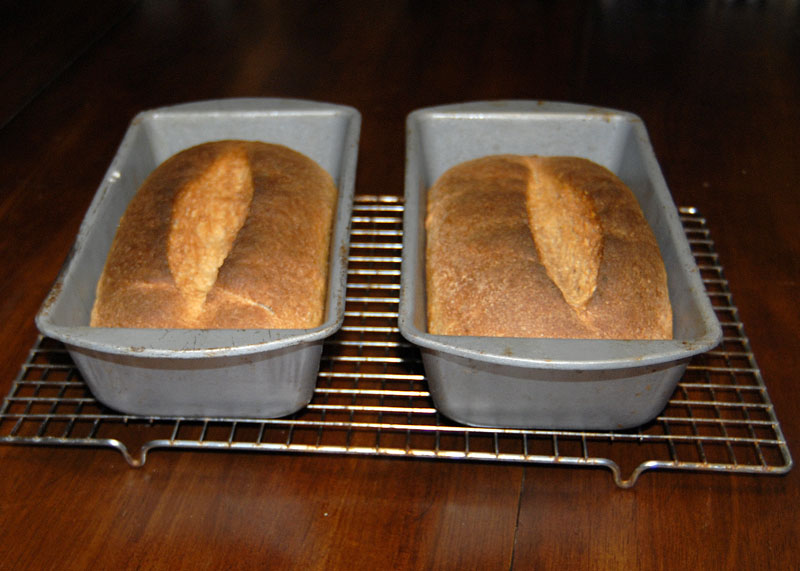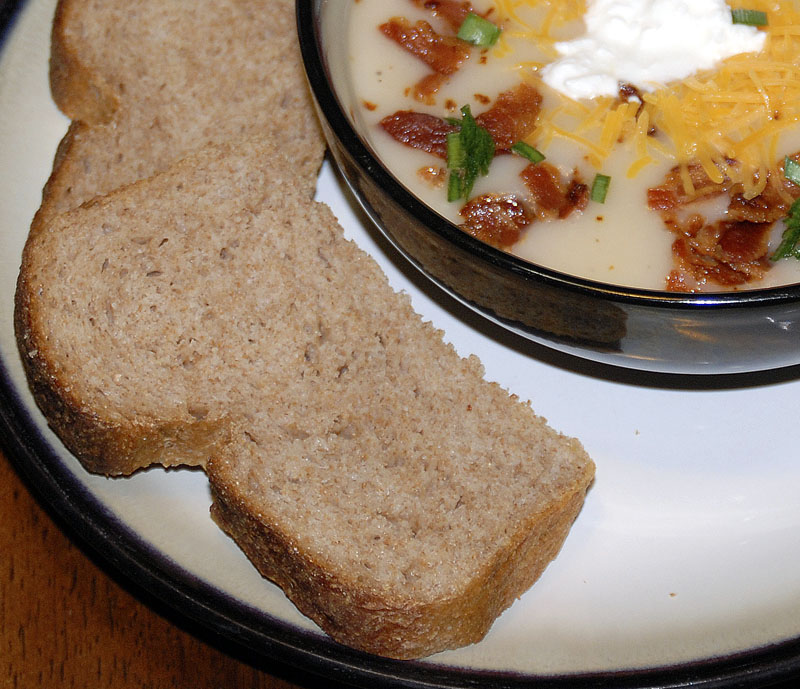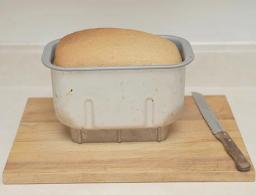As I was paging through BBA to find the various sourdough and other rye bread recipes, I discovered two recipes, with great photos, that I had somehow missed in my many, many trips through that wonderful bread book—Potato Cheddar, and Chives Torpedos, and Roasted Onion and Asiago Miche. Both recipes are from bakeries in Sonoma County, CA, one of my favorite places, home to great wineries, and great wines, and home to some astounding artists, among them, Ginny Stanford, whose portraits of Senator Hillary Rodham Clinton, and the late, wonderful food writer, M.F.K. Fisher can be found in the Smithsonian Portrait Gallery.
In fact, my first exposure to Sonoma County, in 1981, was under the guidance of Ginny Stanford, who led me on a day tour of some of Sonoma County's wineries, including what immediately became my favorite, Kenwood Winery. To this day, the 1978 Kenwood Zinfandel remains one of the best wines I have ever tasted. After the tour, I baked some baguettes at the home of one of Ginny's friends, to accompany a fine dinner of lemon chicken and pasta with pesto. And, though I'd love to be counted among the fine Sonoma County bread bakers, I can at least say I have baked bread in that county that is loaded with all kinds of talent—in art, food, wine, and more.
But, I digress—let's get back to today's bake.
I knew when I saw the two recipes and the accompanying photos, that I would soon bake both—it was just a matter of deciding which one to bake first. My wife, Linda, solved my dilemma. She suggested saving the miche, a three-pound wonder that should be presented on as pictured in BBA, on a pedestal, for a festive occasion (and the recipe yields two of these hefty loaves).
Of course, that festive occasion will be here soon. As I'm sure you know, Mardi Gras originated here in Mobile, AL, and we'll begin the two weeks of parties and parades in the city on January 29. So, yesterday I tried the Potato, Cheddar, and Chive Torpedos, reserving the miche for sometime in the next few weeks. And the results were just great—so great that I will submit this bread to Susan at her wonderful blog, Wild Yeast, for her regular Friday feature, Yeast Spotting.The recipe, slightly abridged, follows. Immediately following the recipe, you'll see what I did, some of which digressed from the recipe (mostly because of my ability to carefully read and then to follow directions).
Potato, Cheddar, and Chive Torpedos from Bread Baker's Apprentice
Ingredients
For two 1.5 pound loaves
8 oz. un-peeled potatoes, coarsely chopped, boiled in 3 cups water until soft, and cooled.
4 to 8 oz. potato water, lukewarm (from above)
10.5 oz. barm
18 oz. unbleached bread flour
.22 oz (2 tsp.) instant yeast
.5 oz. (2 tsp.) salt
1 oz (one-fourth cup) chopped fresh chives
6 thin slices (about 4 oz.) sharp Cheddar cheese
Directions
1. Prepare potatoes in advance and allow time for potatoes and cooking water to cool. Remove barm from fridge about one hour before making bread, to take off the chill.
2. In a 4-qt. bowl or the bowl of an electric mixer, stir together the barm, half of the flour, the yeast, the cooked potatoes, and one half cup of the potato water (or, use paddle attachment with the mixer). Let this sit uncovered for 30 minutes.
3. Add remaining flour and the salt, and mix until ingredients form a ball adding as much or remaining water as needed.
4. Sprinkle some flour on counter, transfer the dough to the counter and knead the dough for about 6 minutes (or mix on low speed with the dough hook). Add flour or water as needed. Add the chives and continue kneading until they are evenly distributed (about two minutes). In a mixer, the dough should clear the sides and bottom of the bowl. The dough should pass the window pane test, and be very tacky, but not sticky, and should be about 77° to 81°F. Lightly oil a large bowl, and transfer the dough to the bowl, rolling it to coat all sides with oil. Cover the bowl with plastic wrap.
5. Ferment art room temp for about 90 minutes or until the dough doubles in size.
6. Transfer the dough to the counter and cut it into two equal pieces. Press each piece into a rectangle about 6 inches wide by 8 inches long. Lay three slices of cheese on each rectangle, covering the surface, but leaving about a half inch border uncovered around the edges. Tightly roll up the dough from bottom to top, jelly-roll style, creating a spiral with the cheese. Seal the ends of the rolled dough, which should look like a log , into points by rolling them more forcefully with your hands. this will give the dough a torpedo look, plump in the middle and tapered at the ends. As you roll down the ends, be sure to squeeze out all the trapped air pockets to avoid separation of the layers. Seal the bottom seam closed with the edge of your hand.
7. Line a sheet pan with parchment, mist the parchment lightly with spray oil, then dust with cornmeal or semolina flour. Lay the two loaves across the width of the pan, mist the tops lightly with spray oil, and cover loosely with plastic wrap.
8. Proof at room temp. for about one hour or until the dough nearly doubles in size.
9. Prepare the oven for hearth baking (i.e., have your stone in place) and be sure to have an empty steam pan in place. Pre-heat the oven to 500°F. Score the the top of each loaf with two diagonal slashes, making sure to cut through the first layer of cheese.
10. Generously dust a peel or the back of a sheet pan with semolina flour or corn meal and very gently transfer the loaves, with or without the parchment to the peel or the pan. Slide the loaves onto the baking stone, or bake directly on the pan. Pour one cup of hot water into the steam pan and shut the door. After 30 seconds, spray the oven walls with water and close the door again. Repeat twice more at 30 second intervals. After the final spray, lower the oven temp. to 450°F and bake for 35 to 40 minutes. After 15 minutes, rotate the loaves 180 degrees, if necessary for even baking. The loaves should register 200°F in the center, be nicely browned all over, and sound hollow when thumped on the bottom. the cheese will bubble up out of the cuts, crisp up, and also brown.
11. Transfer the finished loaves to a wire rack for cooling for at least 45 minutes before slicing and serving.
As I said, I didn't follow the recipe exactly as presented in BBA, but I am happy with the results.

I have learned the value of mis en place and adhere to this basic principle at every bake.

As it happened, I didn't need to take my barm from the fridge, as I had refreshed it twice over the past two days, and it was already en place in a covered bowl on the counter.

I had also previously (about 45 minutes earlier) cooked the potatoes and saved and measured out the cooking water.


Next, I mixed half the flour with the yeast (and it appears that I was about a tenth of an ounce over, on my flour)

I mixed the barm, flour, yeast, potatoes, and a half cup of the potato water…

and added the remaining flour, and the chives (which were to be added just a bit later, according to the recipe)

and a bit more water. Then I kneaded the dough with the dough hook until it cleared the sides of the bowl.
I then, transferred the dough to an oiled bowl, and covered it with its own lid.

It seems I have a tendency to use a bit more oil than what might be considered "lightly oiling a bowl."
After the dough had fermented for about 90 minutes,

I divided it into two rectangular pieces, and placed the cheese strips as directed. However, I had a narrow brick of white sharp cheddar cheese, and so, I used about 10 strips for each rectangle, and then, because I didn't carefully read the directions, I rolled the dough up on the eight inch side, making for rather longish torpedos that would not fit across the pan, but would only fit lengthwise.

I realized that it seemed silly to proof the loaves on a half-sheet pan, and then transfer them to a peel or to the back of another pan,so I quickly pulled out my new SuperpPeel™ (again without the cloth conveyor belt) and gently moved the loaves, on the parchment to the peel for proofing. that worked really well and the loaves on the parchment slipped perfectly onto the stone when it was time to bake. I much prefer the SuperPeel™ to my aluminum peel—it's bigger, and can easily accommodate loaves crosswise, which helps getting them into the right position on the stone. Now I use the aluminum peel mostly for removing loaves, one at a time from the oven when they are finished baking.
After proofing for a bit more than an hour, I scored the loaves (at this point on parchment on the Super Peel)…

but, as you can see, I scored the front loaf three times instead of two (because my placement of the first score was too near the end of the loaf).
Nonetheless, and despite my mis-steps, the loaves turned out well, with a soft crumb, an astounding aroma and flavor, and a pretty decent crust.

My guess is that I didn't roll the dough tightly enough, and that caused the holes you see (and that is where the cheese is).
All in all, this was bread that was fun to bake, and once again, I learned a great deal (especially about reading directions).
I can tell you that after the requisite cooling period, the first slice was not enough, and my wife and I happily (but with some guilt) ate about a third of that loaf.
